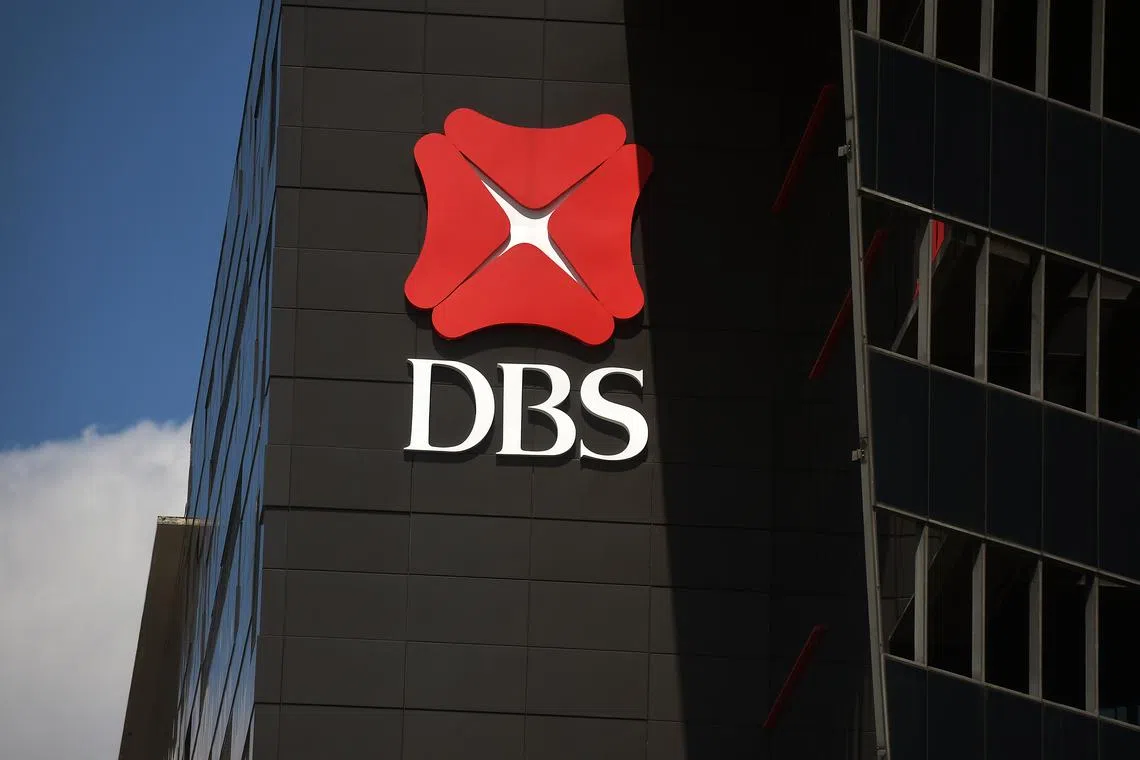DBS Q2 profit jumps 48% to record $2.69b even as it cuts loan, fee income growth forecasts
Sign up now: Get ST's newsletters delivered to your inbox

DBS’ commercial book’s second-quarter net interest income rose 54 per cent year on year to $3.58 billion.
PHOTO: ST FILE
Follow topic:
SINGAPORE – DBS Group Holdings on Thursday reported record quarterly earnings as higher interest rates continued to lift its margins, and wealth management and card fees rebounded after a dry spell.
This comes even as it slightly moderated its expectations for loan and fee income growth in 2023 as the economy slows down and investors exercise caution.
Net profit of the largest lender in Singapore and South-east Asia stood at $2.69 billion for the second quarter, up 48 per cent from a year ago. It topped the $2.41 billion forecast by analysts in a Refinitiv poll.
Earnings came in at $2.63 billion, when $60 million in one-off integration costs from the acquisition of Citigroup’s Taiwan consumer banking business were considered.
The board declared a dividend of 48 cents a share for the second quarter, an increase of six cents a share from the previous quarter.
The growth is in line with the bank’s guidance for a baseline annual increase of 24 cents a share, said DBS.
Together with the first-quarter dividend, the total dividend for the first half of 2023 amounts to 90 cents a share.
DBS chief executive Piyush Gupta said the commercial book benefited from higher interest rates and broad-based growth in non-interest income activities, which was moderated by higher funding costs for treasury markets.
“During the quarter, we commenced work to strengthen the resilience of our technology while awaiting completion of the independent review into the recent digital disruptions,” he added.
DBS’ commercial book’s second-quarter net interest income rose 54 per cent year on year to $3.58 billion. This was driven by a 96 basis point jump in net interest margin (NIM) – a key gauge of a bank’s profitability – to 2.81 per cent.
Mr Gupta told reporters that the increase in NIM was “a bit of a surprise”. The bank said in the first quarter that margins had likely peaked amid expectations that the United States Federal Reserve was coming to the end of its rate-hiking cycle.
“I think there is at least a couple of basis points upside from the second quarter, from where we are,” said Mr Gupta, citing US interest rate increases in the second half of 2023 and continued support from one-fifth of the bank’s commercial book, which has not been repriced yet.
Commercial book net fee income rose 7 per cent to $823 million – the first year-on-year increase in six quarters.
Wealth management fees were buoyed by higher bancassurance and investment product sales, and card fees grew on the back of higher spending, including for travel.
These increases were moderated by a 5 per cent decline in transaction service fees led by trade finance.
Fee income is likely to expand at a high single-digit percentage in the second half, and at a mid-single digit for the full year, said Mr Gupta. He previously expected it to grow at a high single-digit percentage for the full year.
He foresees a further fee income lift from the cards business due to higher spending, and continued momentum in wealth management, including from net new money inflows of $12 billion in the first half of the year.
Half of the inflows have gone to deposits, and the other half to investments, noted Mr Gupta.
“Typically, you’d expect 80 per cent of the money to be invested, so there is upside that if the market starts turning around, that money (in deposits) will go into investments,” he said, adding that half of the $6 billion of net new money inflows in the second quarter came from North Asia.
DBS and its peers are also dealing with weak loan growth in 2023 as economic uncertainty and high interest rates weigh on borrowers’ sentiment.
DBS’ loans were stable compared with a year ago, but declined 1 per cent from the first quarter due to a contraction in trade loans amid a general market slowdown and unattractive pricing.
Mr Gupta now expects loans to grow at a low single-digit percentage for the full year, from trade and non-trade corporate loans. This is a slight deterioration from his first-quarter forecast of 3 per cent to 5 per cent, and before that, mid-single-digit growth.
“The loan growth problem is not just due to the macro slowdown. It has to do with the fact that a lot of the loans have shifted from our booking centres principally in Hong Kong back to the mainland,” he said, citing lower Chinese onshore rates and the renminbi’s depreciation.
Chief financial officer Chng Sok Hui noted that a steep rise in the Hong Kong benchmark interest rate has also accelerated repayments on non-trade corporate loans in the city.
Meanwhile, the bank wrote back $42 million in general allowances previously taken for potential bad loans as the amount was transferred to non-performing assets and credit upgrades.
General allowances of $57 million were taken in the first half of the year, with $99 million set aside in the first quarter to strengthen the reserves.
The bank’s non-performing loan ratio stood at 1.1 per cent in the second quarter, unchanged over the first six months of the year and an improvement from 1.3 per cent a year ago. New non-performing asset formation remained low and was offset by repayments and write-offs.
Singapore banks’ earnings season started on July 27, when UOB reported a 27 per cent increase in net profit
DBS shares closed 8 cents, or 0.24 per cent, lower at $33.76 on Thursday. OCBC fell 15 cents, or 1.14 per cent, to $13.04, and UOB dipped 10 cents, or 0.33 per cent, to $29.82.


